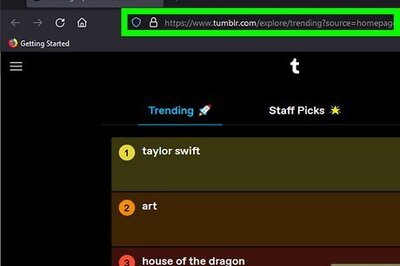
views
The much-awaited OnePlus TV has been launched. Actually, there are two TVs—the OnePlus TV 55 Q1 and the OnePlus TV 55 Q1 Pro. This is the company’s first foray into the smart TV space. The two TVs from the company have a 55-inch QLED display, which has a native 4K resolution. The smart TV platform on both is Google’s full-fledged Android TV. OnePlus says that they will roll out all Android TV updates for the next three years. The OnePlus TV 55 Q1 is priced at Rs 69,900 and the OnePlus TV 55 Q1 Pro will set you back by Rs 99,900.
Some of the features that the OnePlus TV line-up packs in include Super Resolution, Contrast enhancement and support for Dolby Vision and Dolby Atmos technologies. OnePlus is quite confident about the prowess of the display panel. “In a gamma color comparison test, we went out in the market, selected few of our closest competitors in the high end QLED TV space and found out that our color range is 13.1% higher than that of our closest competitor. And almost 30% higher than the next player in line,” says OnePlus.
The OnePlus TV 55 Q1 Pro also has an integrated soundbar-esque speaker system which has 8 speakers—two facing backwards and six facing towards the front, for wider sound and bass as well. The total sound output is rated at 50-watts. In fact, this soundbar slides down from behind the panel when you switch on the TV.
At the back of the TV is a carbon fiber finish. The connectivity options and ports are hidden behind a magnetic plate that can be put back in place and hide away the clutter of the ports and wires. But, do you ever really look at the back of your TV?
The QLED TV panel technology is also used by Samsung, and is short for quantum-dot LED screen. The QLED panels rely on LED backlighting, and the quality of that will have a huge bearing on the contrast ratio and high dynamic range (HDR) performance. Simply put, this display tech is not at the same level as the similar sounding but very different OLED display tech. In an OLED display, individual pixels emits their own light, which then results in better local dimming and illumination of different parts of the screen, depending on the content being viewed at the time. But time will tell how good these QLED panels are.



















Comments
0 comment